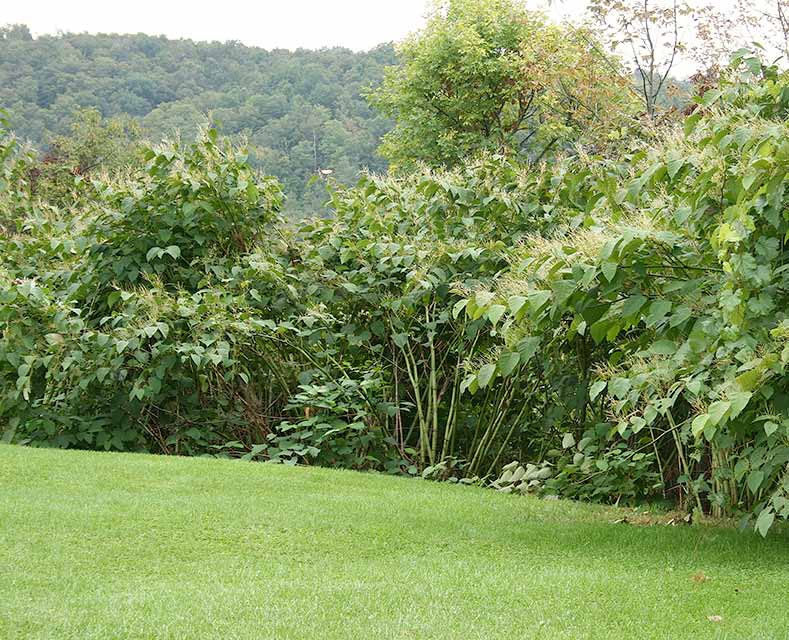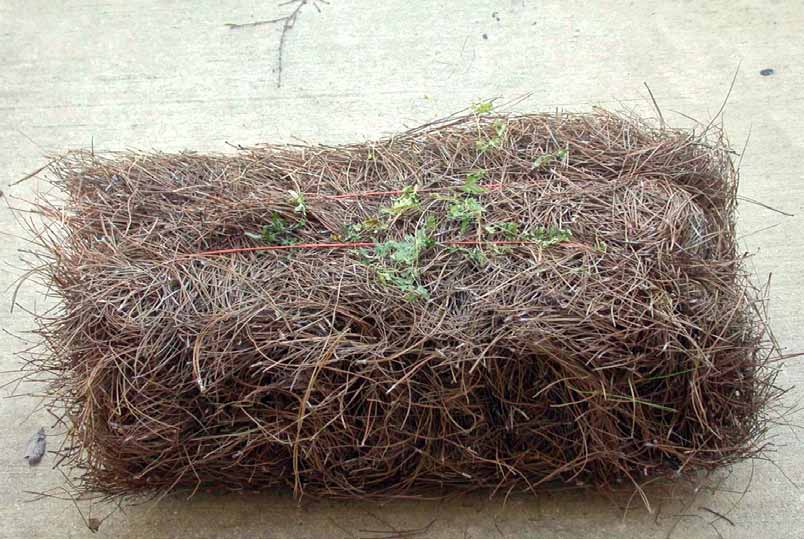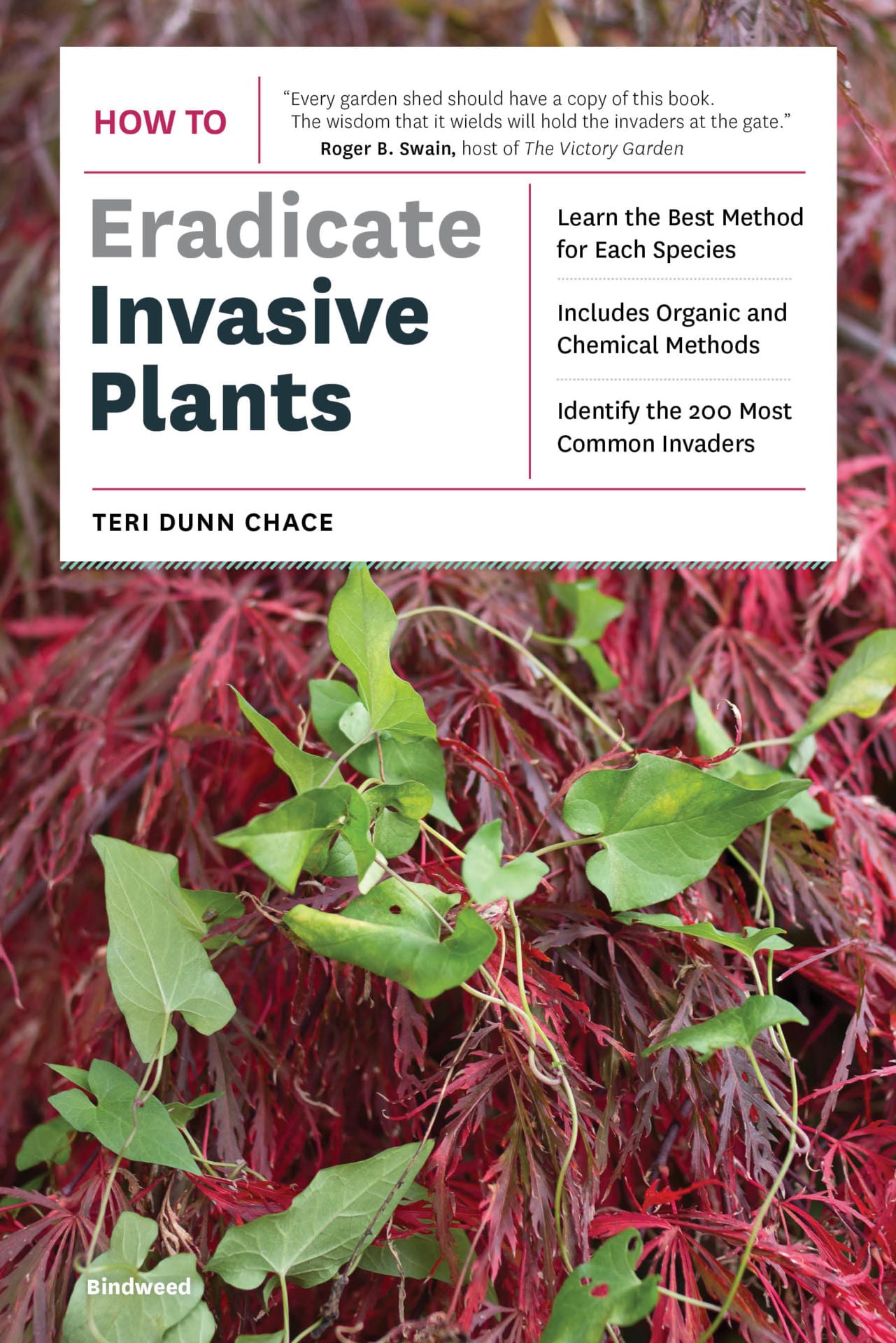 by Teri Dunn Chace
by Teri Dunn Chace
Excerpts taken from How to Eradicate Invasive Plants © Copyright 2013 by Teri Dunn Chace. Published by Timber Press, Portland, OR. Used by permission of the publisher. All rights reserved.
Worldwide Weeds
Culturally, we live in a global village, thanks primarily to a dazzling array of technological advances in transportation and communication. Mixing it up, traveling and trading, importing and exporting, exploring and exchanging ideas and materials—all this is generally considered not only inevitable but also desirable. Awareness and diversity are good, indeed exciting and enhancing. We inhabit a web that binds us all together and seemingly shrinks the world.
Meanwhile, smaller, minority voices can also be heard, protesting that sometimes the local, the unique, the indigenous, is being threatened or lost. An American friend who traveled in Tanzania related that, in a remote bush village, she encountered a small boy wearing a tattered but recognizable John Lennon t-shirt: “Heaven knows where he got it or what its travels were,” she reflected in her blog. “It was so jarring and incongruous. Was I glad or sad to see that shirt?”
A similar sensation may assail the informed gardener or botanist who spots a foreign plant in familiar ground. And what about the plant collector who imports and plants, say, a nifty exotic flowering akebia vine from Sichuan Province, China? Or the avid, adventurous gardener who snaps up a seedling of foreign origin at a specialized nursery or flower show, just because it looks to be beautiful, just for the challenge, or even simply because he or she values rare or cutting-edge plants? Even if the import is untested in this country?

A thicket of Japanese knotweed hovers on the sidelines, annually encroaching on a well-manicured lawn. Photo: Teri Dunn Chace
Yes, gardeners—for a variety of aesthetic and practical reasons—have occasionally been credited or blamed with introducing a “problem plant” to American soil. The examples are legion. Will the aforementioned akebia, so lovely and tame in situ, turn out to be a monster here? Will importers and boosters of the rare, foreign, and exotic be praised or blamed in a few years or decades?
Not all introductions have been or are deliberate. In Weeds: In Defense of Nature’s Most Unloved Plants, British nature writer Richard Mabey cites a variety of other vehicles on which plants have hitched a ride: in ballast, in packing materials, in contaminated seed and feed, in fill soil, as well as in once-popular food crops and useful herbs that have gone rogue. Even on the smallest scale, most gardeners have, at one time or other, brought home a potted plant from the local nursery only to discover a stowaway tucked under the leaves, an unwelcome burdock or thistle.
Other plants have arrived with the best intentions, promoted as ideal for erosion control or low-maintenance landscaping. In Florida, the once-promising imported ornamental tree known as bishopwood has been rapidly wearing out its welcome by overtaking fragile native swampland communities. The agents? Native as well as introduced birds, which relish the seeds.
Occasionally an unsavory foreign relative of a native plant worms its way into and ultimately alters the gene pool, as is apparently the case with alders, to name but one example. All this brings to mind that pivotal moment in the sci-fi classic The Andromeda Strain when a scientist exclaims in panic, “There’ll be a thousand mutations! It will spread everywhere! We’ll never be rid of it!”
Weed Prevention for Gardeners
Since it generally is easier to prevent a problem than to solve one, you might want to consider ways to keep weeds from infiltrating your property rather than wait until an infestation occurs and then look for ways to eliminate it. Yes, weeds are resourceful and have seemingly unlimited ways of moving from place to place, but you can do something about them long before you learn the name of the enemy weed.
Here are nine ways to keep out invaders in the first place. Most of these are a matter of being vigilant. Weeds are opportunists, but can be slowed down or thwarted by a sharp eye and quick, appropriate action.
- Patrol Your Yard
Walk around your yard regularly and keep your eyes open and your nose to the ground. Evict suspicious seedlings the moment you see them.
You may have an invasive plant in your yard if . . .
- You do not recognize it, did not plant it, or can clearly see it coming across your property line.
- It appears in your yard after a neighboring property fills with weeds due to neglect, construction, re-grading, logging, or other disturbance.
- It overruns your flowerbeds or vegetable patch, especially engulfing new, young plants trying to become established.
- It grows rampantly, exhibiting “explosive growth.”
- It is not fussy about location or growing conditions.
- It has stems and/or tendrils that quickly grasp and cover a fence, hedge, wall, tree, or other garden plants.
- It resists control. When you tear it out, it returns quickly.
- When you pull it up, you find a surprisingly extensive handful of questing roots or runners.
- It produces an abundance of flowers and fruit, and therefore seed.
- You notice it popping up all over the yard.
- When you cut it back, it responds like Medusa in the Greek legend by generating an alarming number of fresh new stems.
- There is more of it each year.
- When you spray it, it grows back anyway.
- Someone visiting your yard recognizes it and recoils in horror.
- A neighbor complains that the plant has moved into their yard.
- You spot it growing somewhere else, such as in parkland, a neighbor’s yard, or along a roadside, and learn that it is a problem plant.

Pine straw is a popular mulch in the South, but this bale comes with a very aggressive hitchhiker, Japanese climbing fern. Photo: Dennis Teague
- Mind the Borders
Abutting properties, whether a vacant lot, conservation land, or a nongardening neighbor, can bring unwanted, rampantly spreading plants to your yard. Look over the fence or past your property line, particularly at areas upwind from you. Talk to neighbors, where possible, and implore them to control any invasive plant(s). If they do not know what to do, review the options with them, make suggestions, or even offer to do the work for them (see the next chapter for many ideas). If that is not practical, create a barrier with a fence (sunk deeply into the ground) or a trench (filled with gravel, or bare) or a buffer zone (paving, paving stones, gravel, even mulch). The goal is to halt and thwart the invader’s advance onto your property.
- Cover Open Ground
Few plants relish open ground as much as opportunistic weeds. Birds, squirrels, and other animals may deposit seeds deliberately or accidentally, seeds may blow in on a breeze or wander in via water (runoff), or dormant seeds and plant bits may awaken once the ground is cleared or stirred up. If you clear an area in your yard, do not just rake it over and leave it, not even for a day or two. Cover it with the mulch of your choice or a tarp until you are ready to plant it.
- Mulch, Mulch, Mulch
Nothing prevents weed growth better than a cloak of mulch. Mulch blocks light, air, and even moisture from getting through and nurturing seeds and seedlings that you do not want. Whether it is a vegetable patch or a flowerbed, mulch all open or bare spots around and between your desired plants. Over time, of course, the plants will grow and spread out and cover over the spaces with shading foliage, further preventing weeds. Keep an eye on things and replenish the mulch until they do, and maybe even beyond, because tenacious weeds might get a foothold and grow unnoticed until they burst upward or shove aside your garden plants.
- Avoid Tilling the Soil
Experienced gardening authors from Lee Reich (Weedless Gardening, 2001) to Edward Faulkner (Plowman’s Folly, 1943) remind us that digging up, traditional plowing, rototilling, and generally disrupting the soil can be counterproductive. Weeds may regenerate from chopped-up bits of plants, while dormant weed seeds are delivered to the light and oxygen they need to germinate and flourish.
A main benefit of turning over the soil is to aerate it, but if it was not highly compacted in the first place, maybe you should rethink the practice. Your garden might be better off, and you will not work as hard, if you instead undertake soil improvement one new planting hole at a time. Coupled with diligent mulching between the new plants, this tack may surprise and delight you by dramatically reducing your weed population. Moreover, interlopers will not find openings.
- Inspect Newcomers
When you bring home a potted or balled-and-burlapped plant from the nursery or garden center, look it over carefully before or immediately after planting it in its new home. Tiny pesky seedlings might be lurking. Check back often as the new plant establishes itself. Sometimes unwanted seeds that hitchhiked in via the soil mix do not germinate immediately but manifest themselves after a week or more.
- Examine Amendments
Unwanted seeds and viable plant parts can sneak into your yard via a topsoil or loam delivery, farm and other mulches, cheap soil mixes, manure, and compost, as well as hay or straw. Designate a staging area for such deliveries and leave the new material there for a week or more before using. This will give you an opportunity to yank out any interlopers. Sifting the material through a screen or even your fingers as you add it to your garden may catch seedling invaders, but often not seeds. After you have used the new stuff, keep a wary eye on the spot where you put it and act immediately if you spot weeds growing there. You might have to pay more for quality, uncontaminated amendments. You should also spread the word to other gardeners when you find a bad source and especially when you find a good source.
- Know What You Plant
It is a good idea to add only plants whose identities you know to your yard and garden. Gift plants, free plants, sale plants, impulse purchases, incorrectly labeled plants, plants dug up by the roadside or taken from some wild setting—any of these might be trouble. Learn not only a newcomer’s name but also details about its appearance and habits.
- Be a Savvy Shopper
Only buy plants you know or know of, and avoid those with a reputation for rampant, aggressive growth. If you think you see a “bad plant” for sale, speak to the seller. Make sure you have correctly guessed its name and bad nature, and if so, be bold and request that they not sell or grow it. Only patronize nurseries that sell healthy, correctly identified, garden-appropriate plants.
About the Author
Teri Dunn Chace is a writer and editor with more than 30 titles in publication, including How to Eradicate Invasive Plants, Seeing Flowers, Seeing Seeds, and The Anxious Gardener’s Book of Answers. She’s also written and edited extensively for Horticulture, North American Gardener, Backyard Living, and Birds & Blooms. Teri has been managing editor for a variety of gardening manuals, guides, and articles. Raised in California and educated at Bard College in New York, Teri has gardened in a variety of climate zones and soil types, from inner-city Portland, Oregon, to coastal Massachusetts. She now lives and landscapes in upstate New York.


